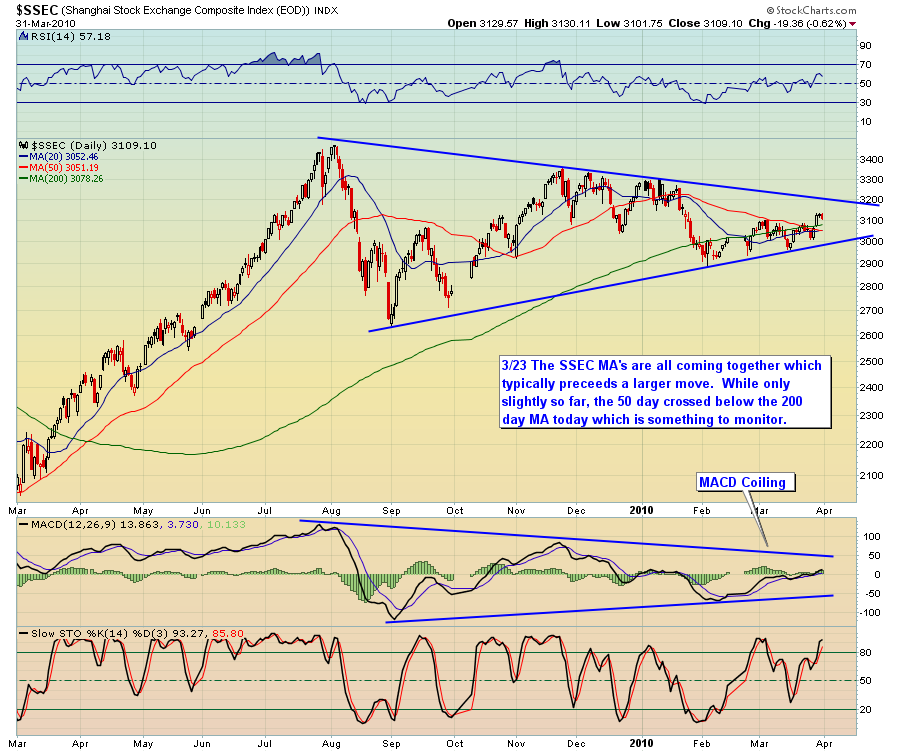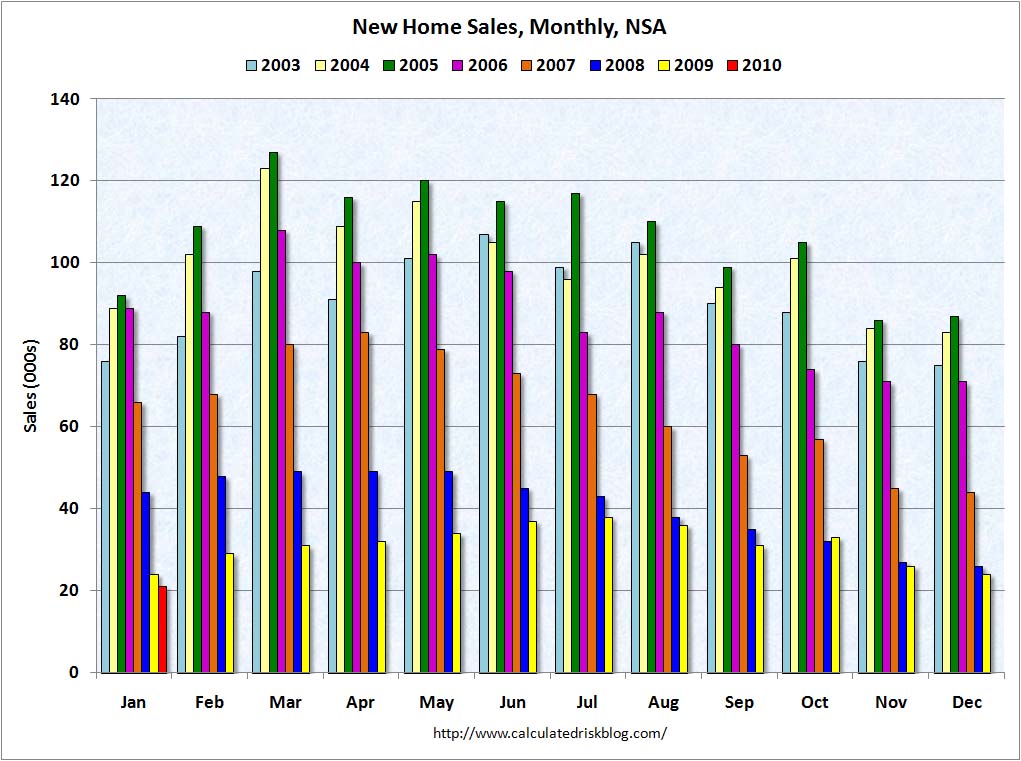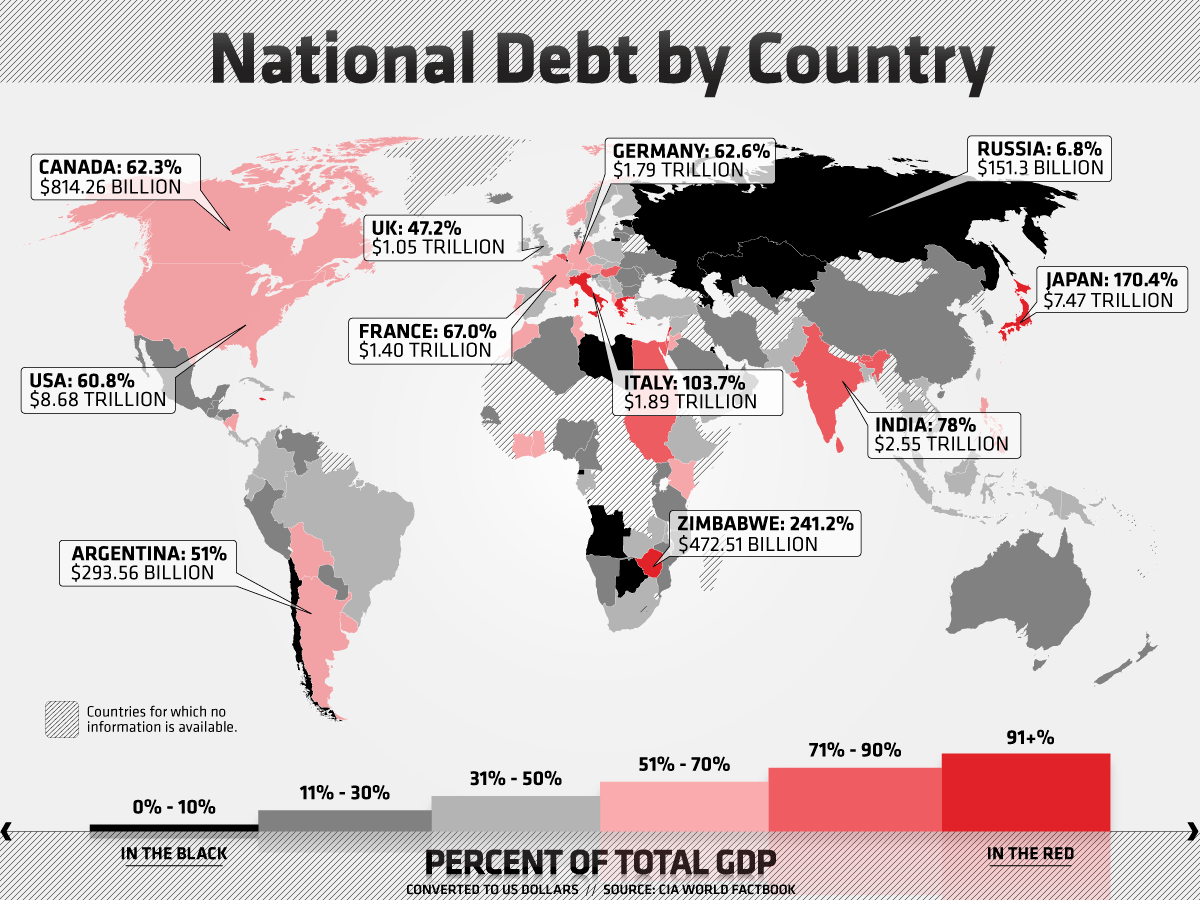Here’s some food for thought: the Chinese market bottomed first, it bottomed in November of 2008, whereas the US Markets (and most world market’s) bottomed in March 2009. Currently the SSEC and Chinese markets have not made new highs. Perhaps this time around the Chinese market will top first, whereas it bottomed first last time. Who knows, but it has a VERY nice triangle setting up, let’s see which way this breaks, if it’s to the upside instead, that would be super bullish, if it’s to the downside . . .something to keep note of we think.
New Home Sales at Record Low
The Census Bureau reported that sales of new single-family homes in February were at a seasonally adjusted annual rate of 308,000. This is a new record low and a 2.2% decrease from the revised January rate of 315,000.
Some attribute the record low sales to February’s weather, which covered much of the country in snow. Others contend that the new home tax credit that was originally supposed to end last year merely moved sales that would have taken place this year to last year. In my view, both factors likely played a role in the February figures, but it’s clear from this chart I found on www.calculatedriskblog.com that the housing market is still in deep trouble.
And in case you think we may have finally reached the trough of the housing crash, I’d like to remind you about the overhang of ARMs (adjustable rate mortgages) that is due to reset over the next two years. There’s a lot of default on the horizon and the market will tank further.

The national debt of countries represents how much money the government of that country owes. Like a household budget, national debt gets larger when a government spends more than it takes in. This can continue for years, or even decades. This budget deficit is the total amount of this debt that has grown over time, with interest charged adding significantly to the amount owed by the government.
The amount owed varies greatly with the amount of money a country generates, its population and how much its government spends. In Germany, the national debt is $1.79 trillion. This represents 62.6 percent of Germany’s gross domestic product, or GDP. In The U.K. the national debt is $42.2 trillion. This is 47.2 percent of the GDP of the U.K.
In Russia, the national debt is $151.3 billion. This is 6.8 percent of the Russian GDP. Italy owes a national debt of $1.89 trillion, or 103.7 percent of the Italian GDP. The national debt of France is $1.40 trillion. This is 67 percent of France’s GDP.
One of the highest levels of national debt relative to the country’s GDP can be found in Japan. The Japanese national debt is $7.47 trillion. This is 170.4 percent of the Japanese GDP. India has a national debt of $2.55 trillion. This debt is 78 percent of the GDP of India. Zimbabwe has a national debt of $472.51 billion. This level of national debt is 241.2 percent of Zimbabwe’s GDP.
In the Americas, The United States has a national debt of 8.68 trillion. In the U.S., this is 60.8 percent of the American GDP. The Canadian national debt is $814.26 billion. In Canada, the national debt is 62.3 percent of the GDP. In South America, Argentina has a national debt of $293.56 billion. The Argentinean national debt is 51 percent of the GDP of Argentina.
The gross domestic product of a country is the market value of all of the products and services that a country produces in one year. This includes spending that is done by the citizens of the country and by the government of that country. It includes the value of items produced within the county and exported elsewhere, but it does not include the value of any imported items. The GDP is the primary way to calculate the size and status of the economy of a country as a whole. It is calculated quarterly as well as yearly.
A comparison: Fitch downgraded Portugal’s debt aweek or so ago and Monday the 29th of March they also downgraded the State of Illinois to a- (which is 4 grades above JUNK) — lets put this in prospective. Illinois GDP is 633 Billion. Portugal is 236 billiion and Greece is 343 Billion – Therefore Illinois is bigger; this mountian of Debt is just starting!




